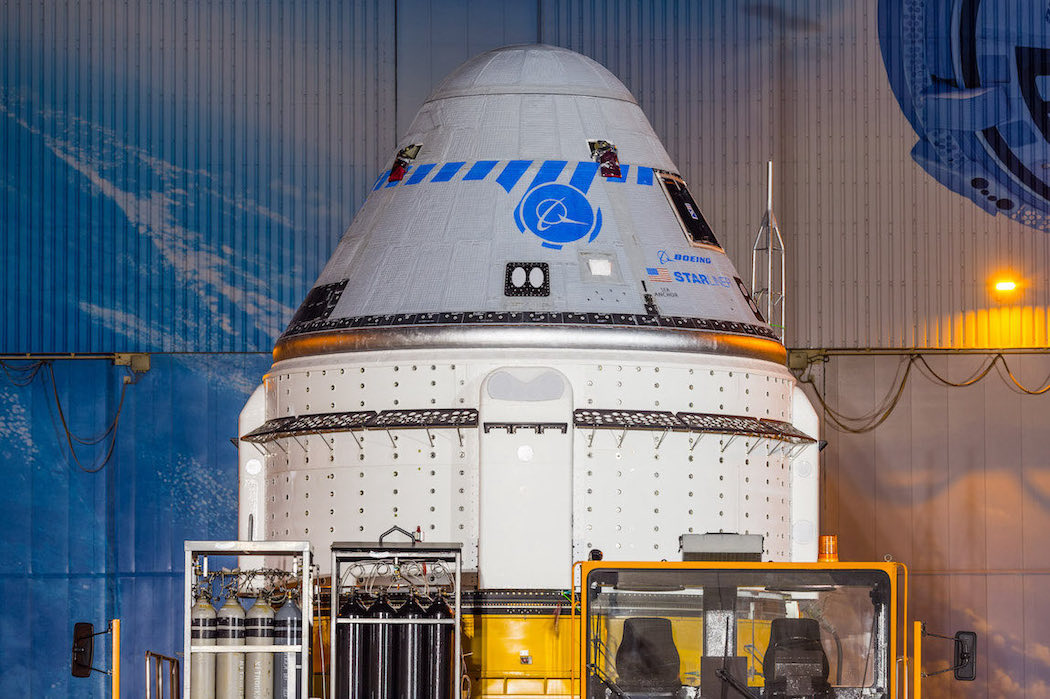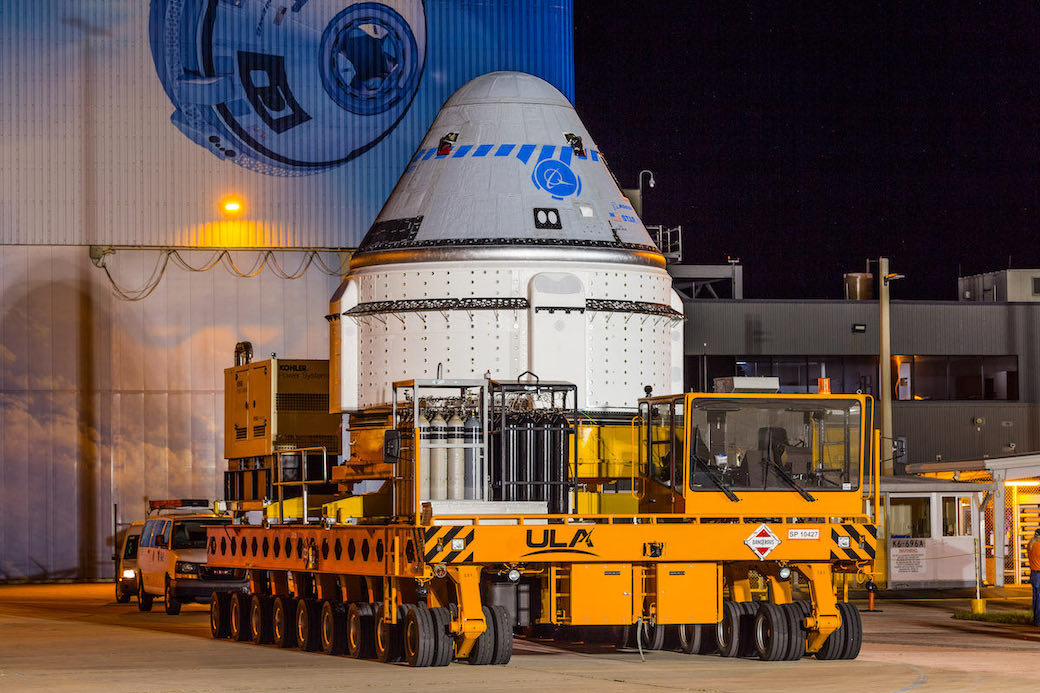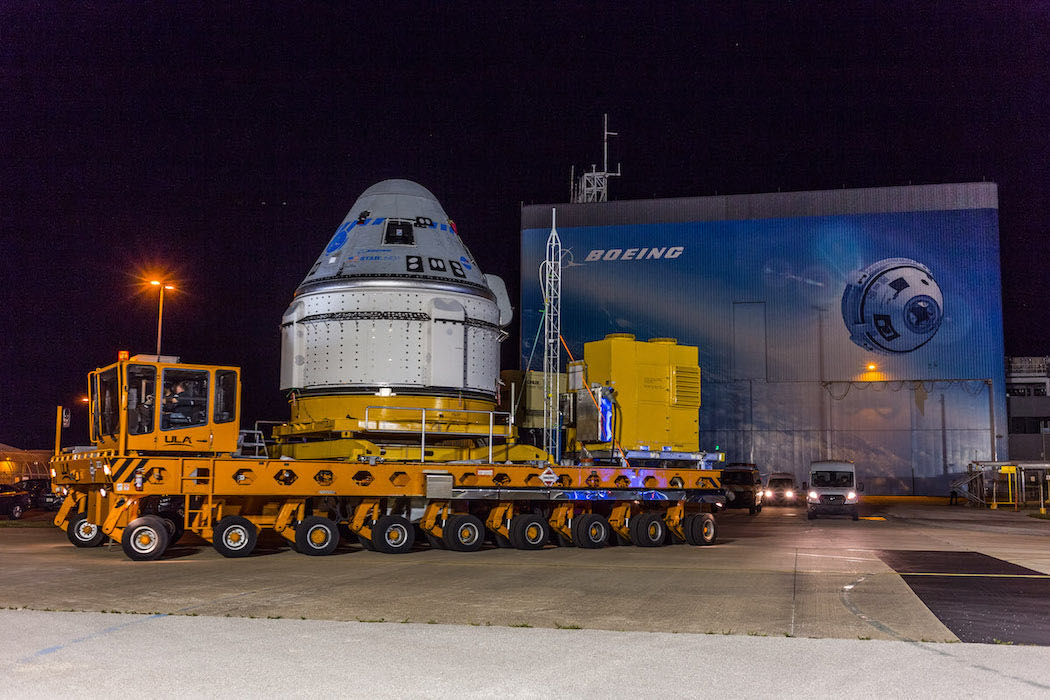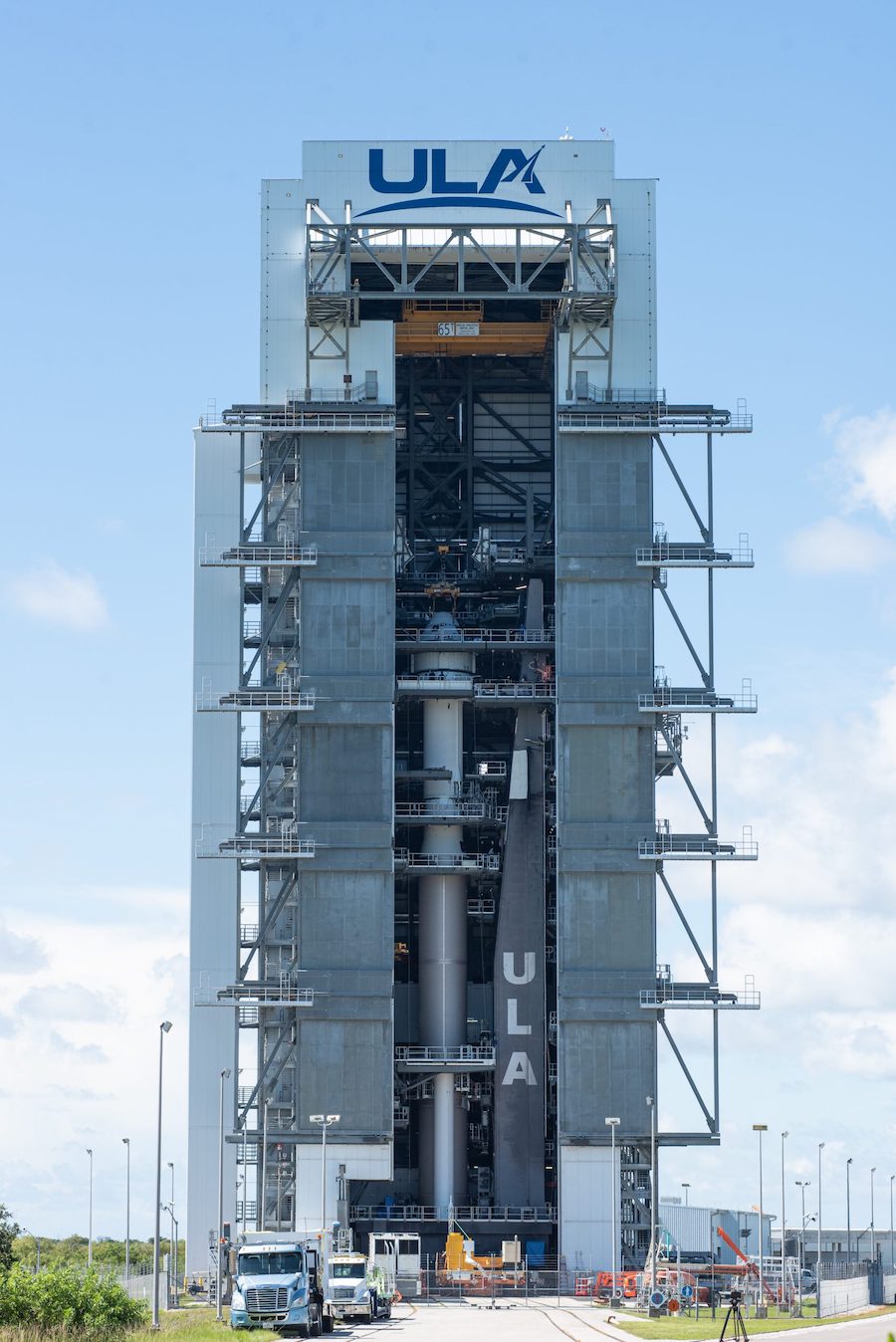
Boeing’s second Starliner crew ferry spacecraft rolled out of its factory early Saturday at NASA’s Kennedy Space Center for mounting on top of a United Launch Alliance Atlas 5 rocket set for liftoff July 30 on a redo of a problem-plagued unpiloted test flight in 2019.
The human-rated spaceship, which has yet to be cleared to fly astronauts, emerged from Boeing’s Commercial Crew and Cargo Processing Facility near NASA’s Vehicle Assembly Building before dawn Saturday, riding a spacecraft transporter for the several-mile journey to ULA’s Vertical Integration Facility at the nearby Cape Canaveral Space Force Station.
ULA’s ground crew attached a four-point lifting sling for the overhead crane in the VIF to hoist the Starliner spacecraft atop the Atlas 5 rocket, which was already stacked on a mobile launch platform inside the vertical hangar.
Teams completed work to attach the spacecraft to the Atlas 5 rocket over the weekend, setting the stage for an integrated systems test, a “tip-to-tail” checkout of the entire vehicle.

Boeing is gearing up for the second unpiloted orbital test flight of a Starliner spacecraft, a redo of the company’s first Starliner demonstration mission in December 2019. Software problems prevented the spacecraft from docking with the International Space Station on that mission, resulting in a premature but successful landing of the capsule in New Mexico.
The Starliner spacecraft was developed under contract with NASA, which has signed a series of contracts with Boeing valued at more than $5 billion to design, build, and test the crew-rated spaceship.
Assuming the upcoming mission, called Orbital Flight Test 2, goes as planned, NASA will clear Boeing to launch the Crew Flight Test late this year or in early 2022. That mission will carry three astronauts to low Earth orbit on a final verification flight before Boeing’s two reusable Starliner capsules begin regular crew rotations to and from the space station.
The start of crew rotation services using Boeing’s crew capsule will give NASA two U.S.-made vehicles capable of flying astronauts to the International Space Station, plus Russia’s Soyuz capsule, which was the only ship ferrying space station crews from 2011 until 2020.

SpaceX’s commercial Crew Dragon capsule flew astronauts to the space station for the first time in May 2020.
Boeing appeared to be on the cusp of launching the Crew Flight Test in 2020, but Boeing and NASA officials agreed to fly a unpiloted test mission after the 2019 demonstration flight failed to meet all of its objectives.
A joint NASA-Boeing review team issued 80 recommendations to beef up software testing, update simulations and processes, improve the crew module communication system, and make organization changes. Boeing says the Starliner team has closed out all 80 of the recommendations, including modifying software code and running it through more rigorous testing.
NASA and Boeing officials plan to convene a Flight Readiness Review Thursday to formally clear the Starliner for launch. A Launch Readiness Review on July 27 will provide another opportunity for managers to discuss the status of launch preps.

The 172-foot-tall (52-meter) Atlas 5 rocket and Starliner spacecraft will roll out to pad 41 at Cape Canaveral Space Force Station on July 28.
The launch countdown Friday, July 30, will begin before dawn. ULA’s launch team will oversee loading of liquid propellants into the Atlas 5 rocket ahead of liftoff set for 2:53 p.m. EDT (1853 GMT).
The rocket’s Centaur upper stage will deploy the Starliner spacecraft about 15 minutes after launch, and the capsule will use its own maneuvering rockets to reach a stable orbit and begin the flight to the International Space Station.
Assuming an on-time launch July 30, the Starliner is scheduled to automatically dock with the station at 3:06 p.m. EDT (1906 GMT) on Saturday, July 31.
With a launch on July 30, the Starliner spacecraft is tentatively set to undock from the station and land under parachutes Aug. 5. On that date, the primary landing zone will be at White Stands, New Mexico.
Email the author.
Follow Stephen Clark on Twitter: @StephenClark1.
